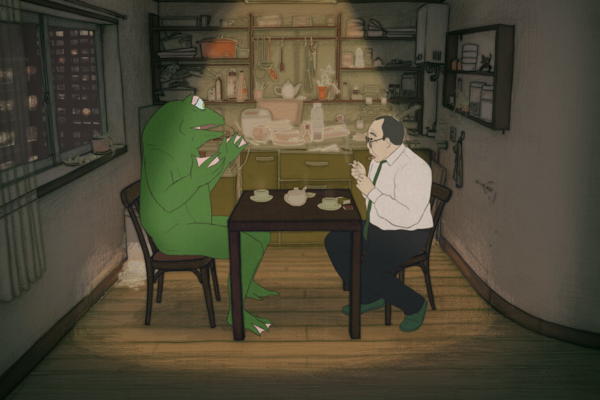
"Blind Willow, Sleeping Woman" animates Murakami’s ideas
By Diane Carson
Through unique elements and interests, director Pierre Földes created the animated “Blind Willow, Sleeping Woman,” an adaptation of six short stories by distinguished Japanese writer Haruki Murakami. Son of Hungarian-born animator Peter Földes, whose 1974 animated short “Hunger” was nominated for an Oscar, Pierre was born in the U.S. of a British mother and raised in France.
Add to that Pierre’s education in music composition and the piano at the École Normale de Musique de Paris and the Sorbonne, and Földes creates a dazzling example synthesizing cultural ingredients. How perfect, then, that Földes undertakes a stimulating interpretation of Murakami’s ideas for his feature film debut. Film viewers will remember last year’s “Drive My Car,” adaptated from another Murakami work. This film, “Blind Willow, Sleeping Woman,” takes its title, from the first story that unfolds with a through line for the following narratives.
In an interview for the Annecy Film Festival, Földes says that as he worked on the script, he began to weave characters and plotlines together, notably those highlighting different facets of three similar personalities. As a result, these individual stories unfold through separate events with thematic connections. They involve Japanese salaryman Komura who fears being fired as his company outsources work, his wife Kyoko, and Komura’s colleague Katagiri. Kyoko leaves Komura and a note: “You are friendly and not an evil man, but living with you is like living with a bag of air.” Meantime, Katagiri interacts with a giant frog to save Tokyo from a catastrophic earthquake, or so he believes. Further initiating contemplation, philosophical nuggets are sprinkled throughout; for example, “You are your choices,” Seneca on a coffee cup; Frog quoting Joseph Conrad, “True terror is the kind men feel towards their imagination.”
Complementing unusual exchanges, Földes’ animation originated with real-life individuals posing, progressing to 2D and 3D in what he calls “live animation,” somewhat like rotoscoping but with a unique appearance. He describes his intent as deliberately going “against conventional cinema dramaturgy,” that is, he doesn’t invite tears or laughter. He wants to affect viewers “in a more interior, personal way.” Indeed, he does. In English, “Blind Willow, Sleeping Woman” screens at Webster University’s Winifred Moore auditorium Friday, June 23 through Sunday, June 25 at 7:30 each of those evenings. For more information, you may visit the film series website.


